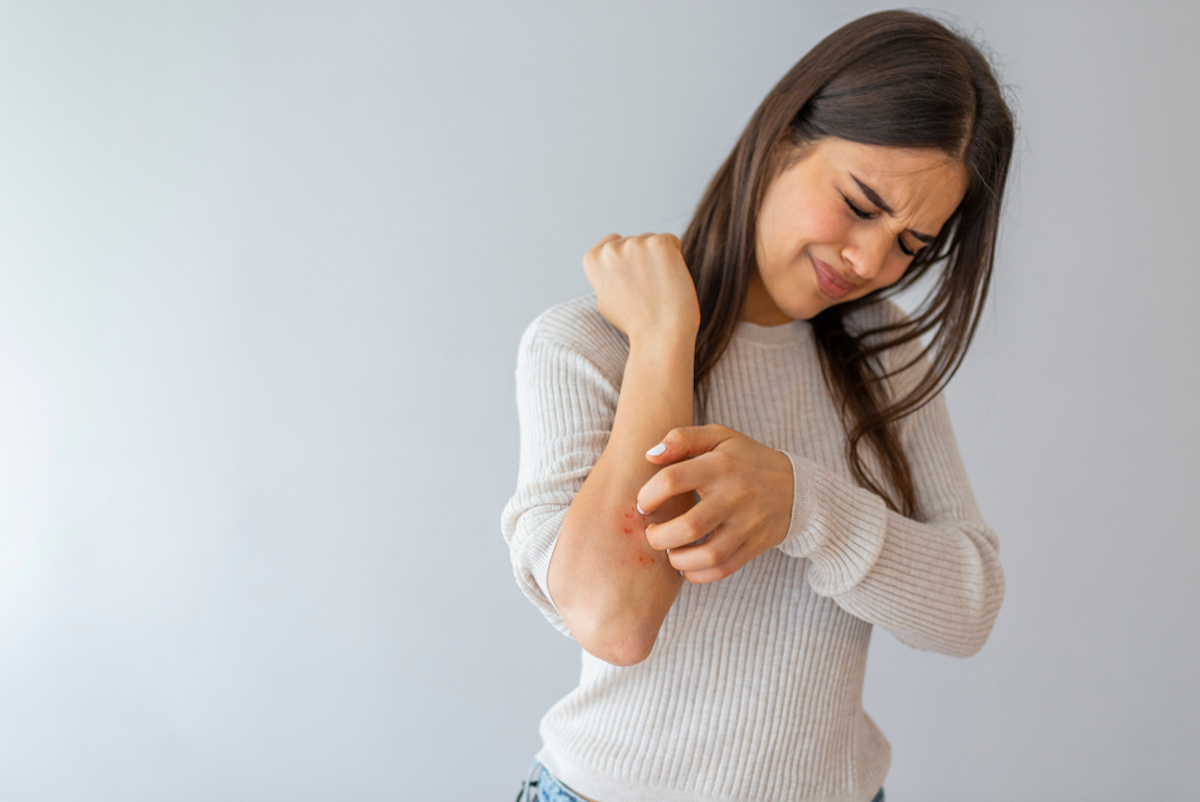Psoriasis is a common chronic condition in which the skin is inflamed. The most common type of this skin condition has delineated patches that can be pink or gray and are covered with silvery, flaky skin. Symptoms of psoriasis may appear for the first time at any age, but this usually happens to young adults or at a later age around 50-60.

Symptoms of Psoriasis
Psoriasis wounds are biologically different from classic dry skin, also known as xerosis, and are classified as erythrosquamous, i.e. both the blood vessels and the deeper layers of the epidermis play a role. Lack of cell renewal is the cause of the so-called dry spots. These defects are caused by several factors: 1. Inflammatory reactions in the deeper layers of the dermis and the upper layers of the epidermis 2. An increased circulation rate of keratinocytes (the cell type that makes up most of the epidermis) 3. A change in the exfoliation process (exfoliation refers to the natural process of repulsion of the outer skin layer).
Types of Psoriasis
- Plaque psoriasis (psoriasis vulgaris) is with 80% the most common form. It manifests itself in red injuries that are usually caused by an infection. They can also be covered with a layer of silver or white flaky skin. These injuries usually occur on the knees and elbows, scalp, or lower back.
- Guttate psoriasis is characterized by ‘droplet-shaped injuries’ consisting of small red spots appearing on the body or limbs. These spots are usually not swollen like the previously mentioned type. This type can appear for the first time in early childhood or with young adults, and it can appear suddenly.
- Inverse psoriasis looks like bright red injuries that are not rough but rather smooth and shiny. This form is mainly found in skin folds and in areas where the skin is softer, for example in the armpits and other skin folds, such as the groin or under the breasts, or between the buttocks. These are also the areas that can become irritated by friction and/or transpiration.
- Pustular psoriasis occurs mainly in adults and is characterized by white pus vesicles (which are not contagious because they consist of white blood cells). The skin around these vesicles can be red.
- Erythrodermal psoriasis is mainly an infection and therefore often affects most of the body’s surface. Extensive redness of the skin leads to flakes that are repelled in large slices and this type causes severe pain and discomfort.
There are several causes and treatments for psoriasis. Continue reading on the next page and find out what they are.

